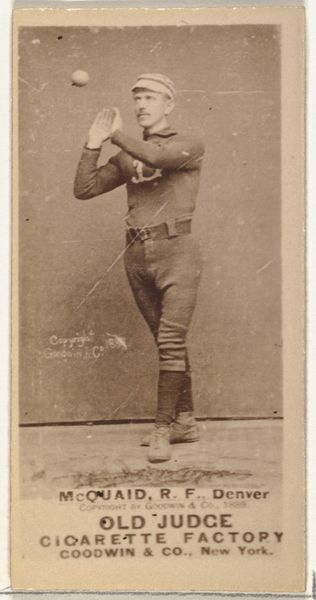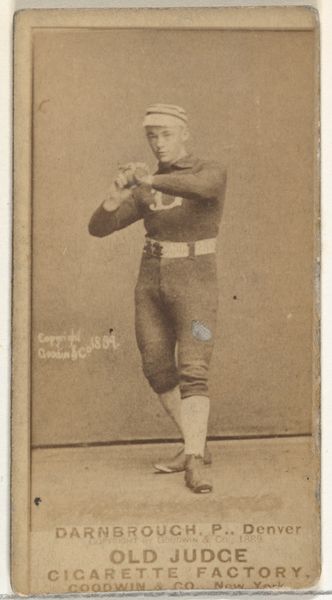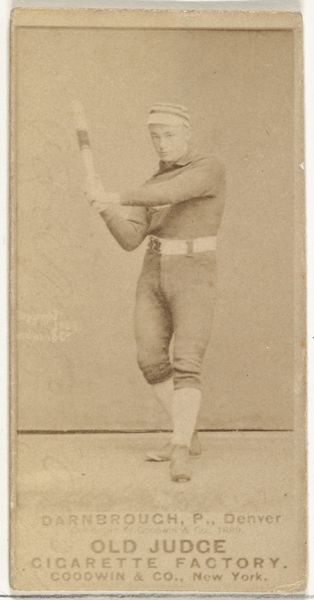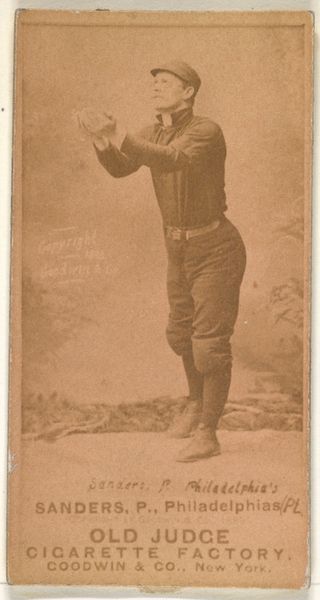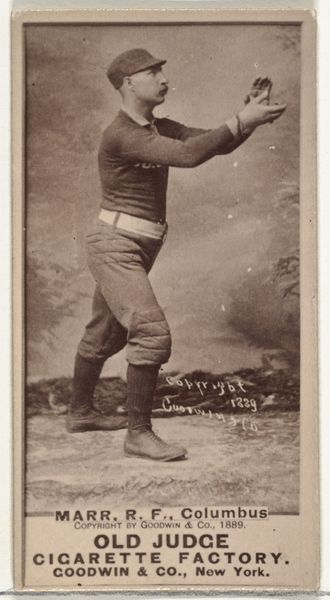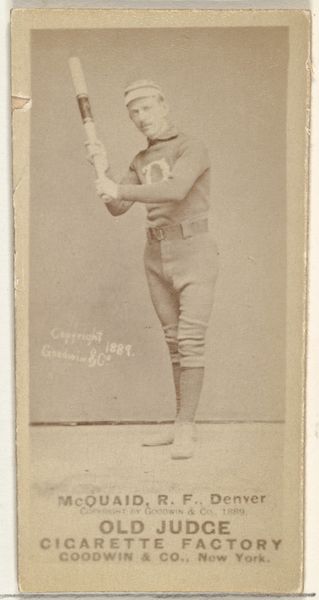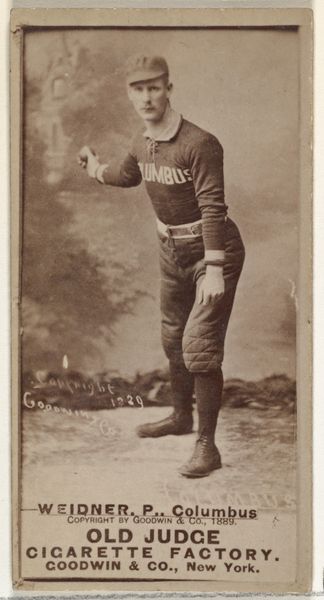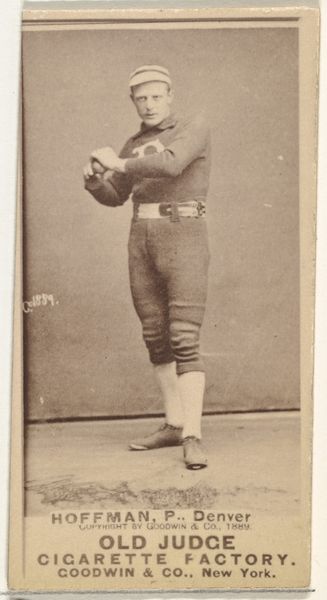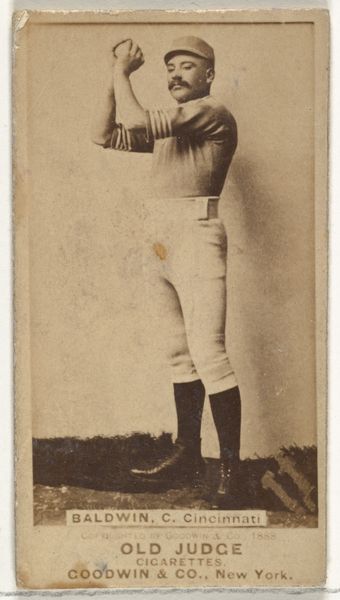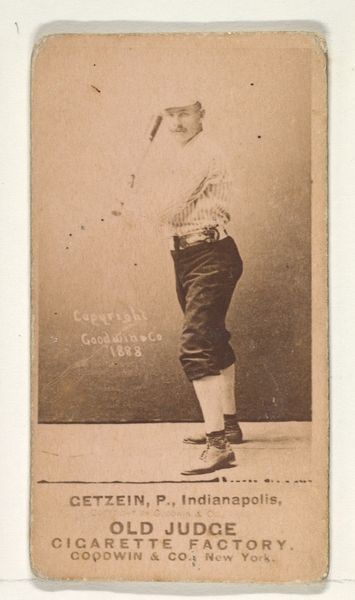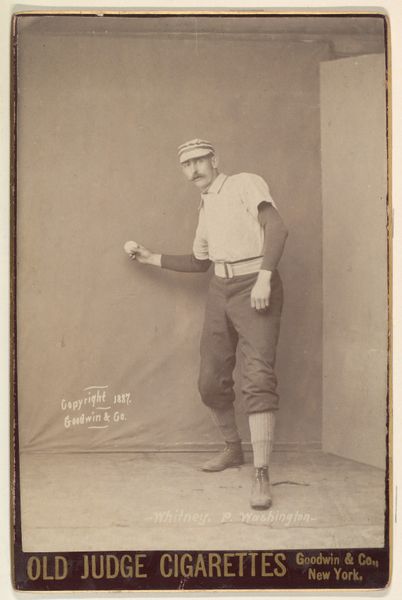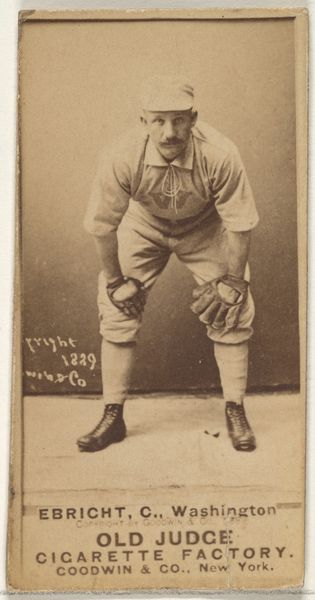
Mortimer Martin "Mart" McQuaid, Right Field, Denver, from the Old Judge series (N172) for Old Judge Cigarettes 1889
0:00
0:00
print, photography, albumen-print
#
portrait
# print
#
impressionism
#
baseball
#
photography
#
genre-painting
#
albumen-print
#
realism
Dimensions: sheet: 2 11/16 x 1 3/8 in. (6.9 x 3.5 cm)
Copyright: Public Domain
Curator: Here we have a curious albumen print dating back to 1889, "Mortimer Martin 'Mart' McQuaid, Right Field, Denver," as part of the Old Judge series created for Old Judge Cigarettes. The image, originating with Goodwin & Company, captures a baseball player mid-action. Editor: My immediate sense is one of melancholy, tinged with anticipation. It's more than a portrait; it feels like a fleeting moment captured, laden with a history both personal and collective, given the context of advertisement of addictive substances. Curator: It’s interesting you mention collective memory, because these cards did more than advertise cigarettes. They subtly, or perhaps not so subtly, embedded the burgeoning sport of baseball, and its heroes, into the national consciousness. McQuaid here becomes a symbol, of athleticism, Americana, and perhaps, the aspirational identity peddled to the smoking public. What kind of signs and symbolic elements are particularly striking to you? Editor: The most arresting, symbolically, is the baseball seemingly suspended in mid-air. McQuaid's outstretched hands evoke a sense of expectation and uncertainty, almost mirroring how capitalist enterprise also suspends workers and consumers in that same manner. Further, I find that sepia tone both authentic and subtly distorting, lending a romantic aura to what was, at the time, simply product marketing. This photo, therefore, works not just in capturing this player, but as part of a complex web of representation and capitalism. Curator: Yes, the albumen print medium lends itself to a softening effect, almost like a mythologized glimpse into the past. Beyond its function as an advertisement, I'm drawn to the careful construction of McQuaid's image: his pose, clothing, even the light itself seems to serve in portraying something specific. It speaks to a careful construction of American masculinity. Editor: The fact that such seemingly "innocent" cards were circulated with cigarettes raises complex ethical considerations too. Was it meant to cultivate an illusion of wholesomeness, maybe attempting to cloak harmful activities behind imagery linked with positive things, such as leisure, sports and togetherness? As such, viewing these works allows me a point of view of 19th-century advertising and its means to engage viewers. Curator: Looking at this photograph has changed how I think about advertising. Thanks for your insight. Editor: And thank you, seeing this ad in that manner opens avenues for reflection that exceed a traditional art review.
Comments
No comments
Be the first to comment and join the conversation on the ultimate creative platform.
